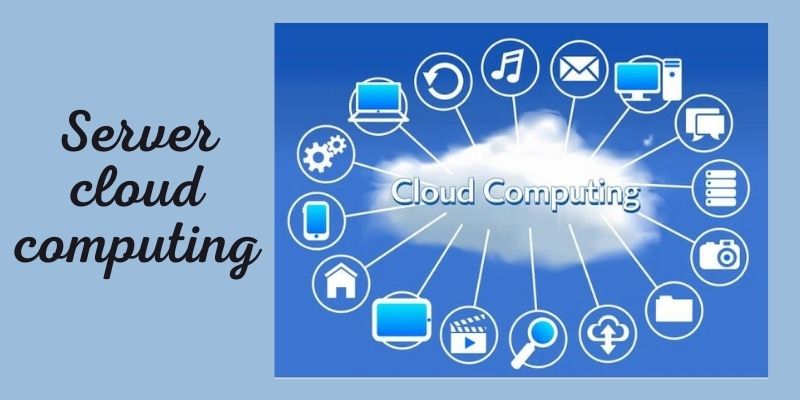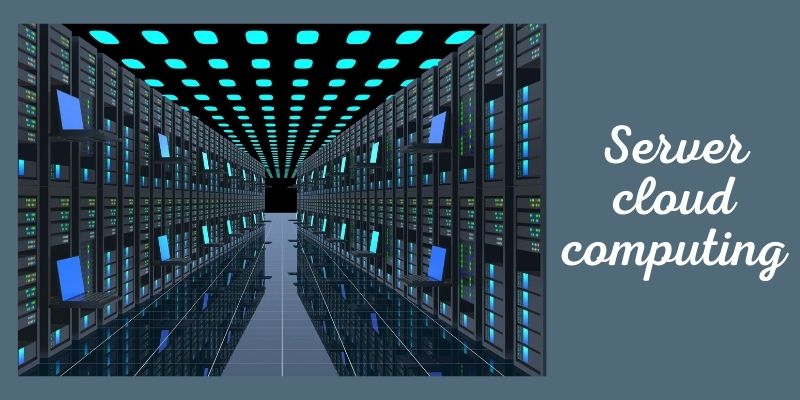A virtualized Server cloud computing it allows users to use its resources remotely through a network. Cloud-based servers are designed to perform the same tasks as conventional physical (and virtual) servers that are housed in a nearby data center, support the same operating systems (OSes) and applications, and give a comparable level of performance. Virtual servers, virtual private servers, and virtual platforms are terms frequently used to describe Server cloud computing. Let’s dhra.info find out!
How do Server cloud computing work?

Server cloud computing
Physical servers are virtualized by Server cloud so that users can access them from a distance. A hypervisor is frequently, but not always, used to virtualize servers. Virtual servers, sometimes referred to as Server cloud computing, are then created and powered using the computational capabilities of the actual servers. Organizations can then access these virtual servers from any physical place with a functioning internet connection. Cloud-based APIs are used to provision and manage cloud servers.
Types of cloud servers
A company has a variety of Server cloud options to select from. The following are three main models:
servers in public clouds. The most prevalent kind of a Server cloud computing is a virtual machine (VM) — or computing “instance” — that a public cloud provider hosts on its own infrastructure and distributes to users over the internet via a web-based interface or console. IaaS is the name of this paradigm. The majority of the time, preconfigured instances with a predetermined virtual CPU (vCPU) and memory allocation are used by public Server cloud. Amazon Elastic Compute Cloud (EC2) instances, Microsoft Azure instances, and Google Compute Engine instances are a few examples of Server cloud computing.
servers for private clouds. A computing instance within an on-premises private cloud can also be a Server cloud. In this scenario, a business offers the cloud server to internal users over a local area network (LAN) and, in some situations, to visitors over the internet. A private Server cloud computing is one that is hosted in an organization’s own infrastructure, as opposed to a public Server cloud computing, which is owned and maintained by a third party.
This is the main distinction between the two types of servers. Private Server cloud computing may use premade instances, but they also provide users the option to choose the vCPU and memory resources that will be used to power the instance. Public or private Server cloud computing can be a part of hybrid clouds.
certain Server cloud computing. real Server cloud, sometimes referred to as bare-metal servers, are another option that cloud providers have in addition to virtual Server cloud. These servers essentially dedicate a cloud provider’s real server to a user. These dedicated Server cloud computing, also known as dedicated instances, are frequently utilized when a corporation needs to implement a specific virtualization layer or address performance and security issues that frequently come with multi-tenant Server cloud computing.
Benefits of Server cloud computing

Server cloud computing
The decision to employ a cloud server will be based on the organization’s requirements as well as its particular application and workload needs. The following are some potential advantages:
Easy of use.In just a few minutes, an administrator can set up a cloud server and link it to other services. An enterprise does not have to worry about server installation, maintenance, or any other responsibilities that come with having a physical server while using a public cloud server.
Globalization. Workloads can be globalized on public cloud servers. Administrators and users can still access workloads from a traditional centralized data center, but performance may suffer for users who are located far away due to network latency and interruptions. Organizations can gain faster and frequently more dependable network access by hosting duplicate instances of a workload in various geographic zones.
Price and adaptability. Public cloud servers operate under a PAYG system. This can save an organization money, especially for workloads that only need to operate briefly or are utilized infrequently, compared to a physical server and its maintenance expenses. When resources need to be scaled up or down in response to demand, such as during software development and testing, cloud servers are frequently employed. The full-time and ongoing cost of cloud servers, however, can exceed the cost of purchasing a server outright depending on usage. Additionally, a thorough accounting of cloud computing costs is necessary to prevent unexpected costs.
Challenges of cloud servers

Server cloud computing
The decision to employ a cloud server may also have significant drawbacks for businesses.
governing and regulation. Organizations may be prohibited from using cloud servers and storing data in specific places due to legal requirements and corporate governance guidelines; these restrictions frequently extend beyond of the organization’s legal, political, and/or geographical borders.
Performance. A VM may be negatively impacted by the high storage or network needs of other cloud servers running on the same hardware because cloud servers are often multi-tenant settings and an admin has no direct control over the physical location of those servers. This is frequently known as the “noisy neighbor” problem. An organization can prevent this issue by using dedicated or bare-metal Server cloud computing. In other situations, shifting workloads to different resources, availability zones, or regions can solve the issue.
Failures and adaptability. Periodic and erratic service interruptions are common on Server cloud computing, typically brought on by a problem in the provider’s infrastructure or an unanticipated network loss.
Some businesses decide to maintain mission-critical workloads in-house rather than in the public cloud due to this and the fact that users have no control over a cloud provider’s infrastructure. Additionally, public clouds lack any built-in high availability or redundancy. Users who need a workload to be more available must purposefully design that availability into the cloud system built to host the job.